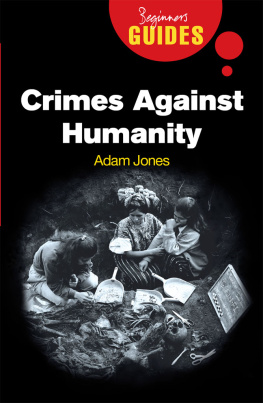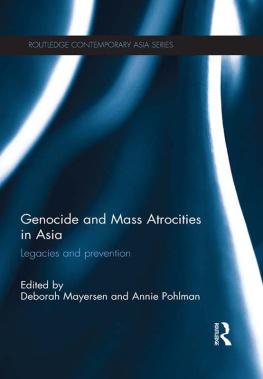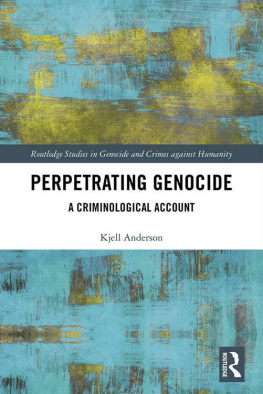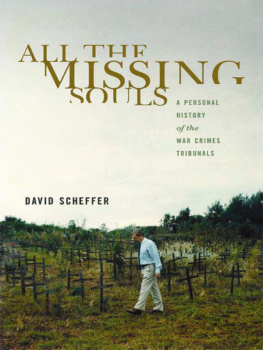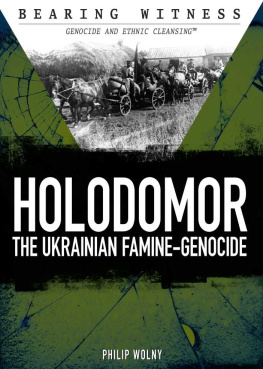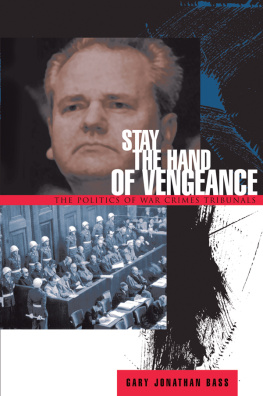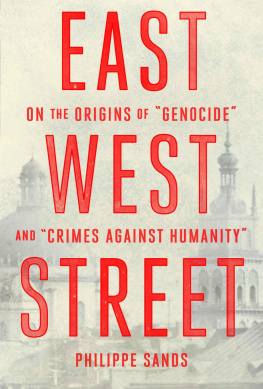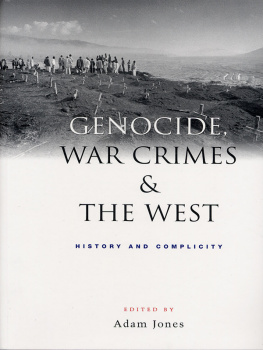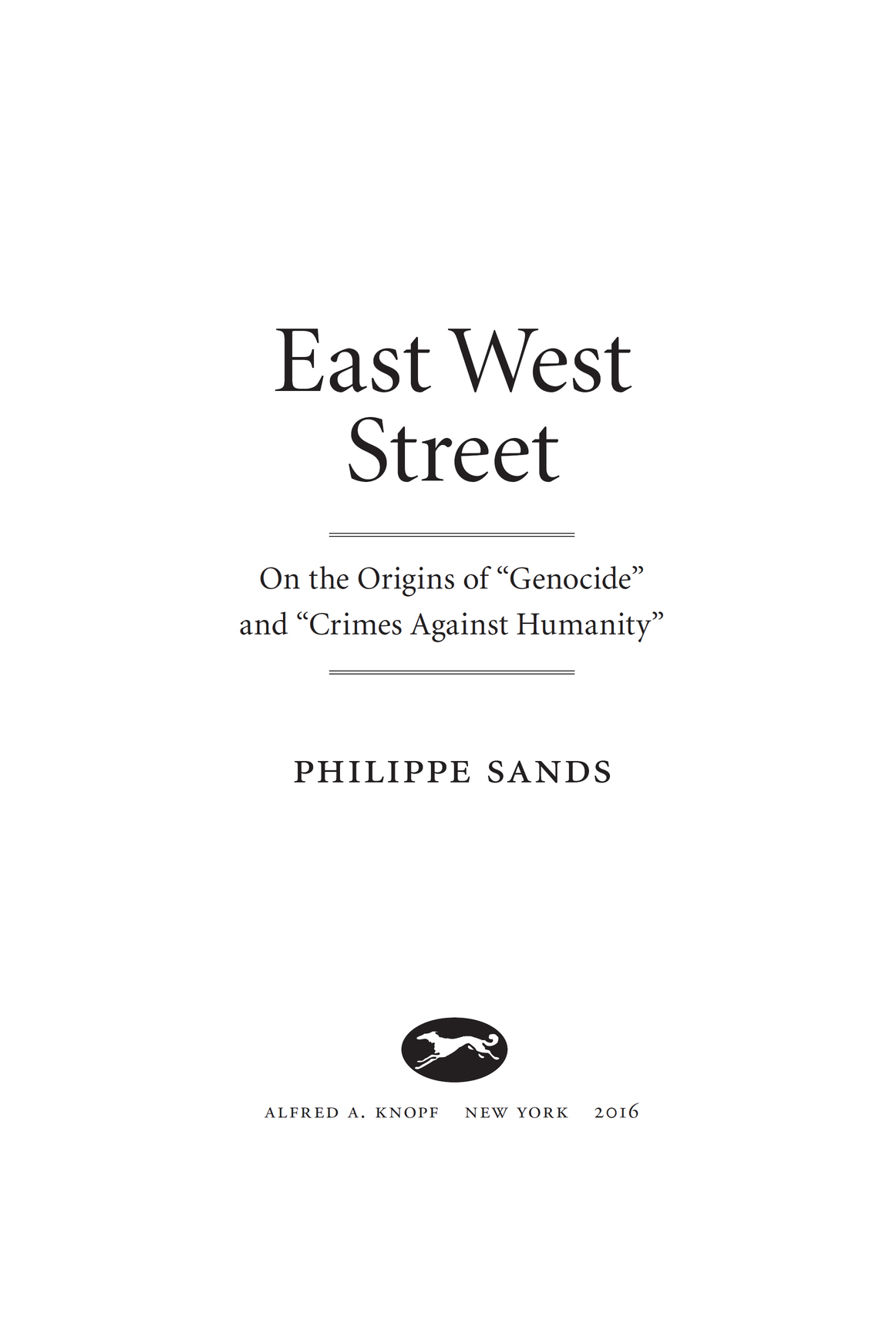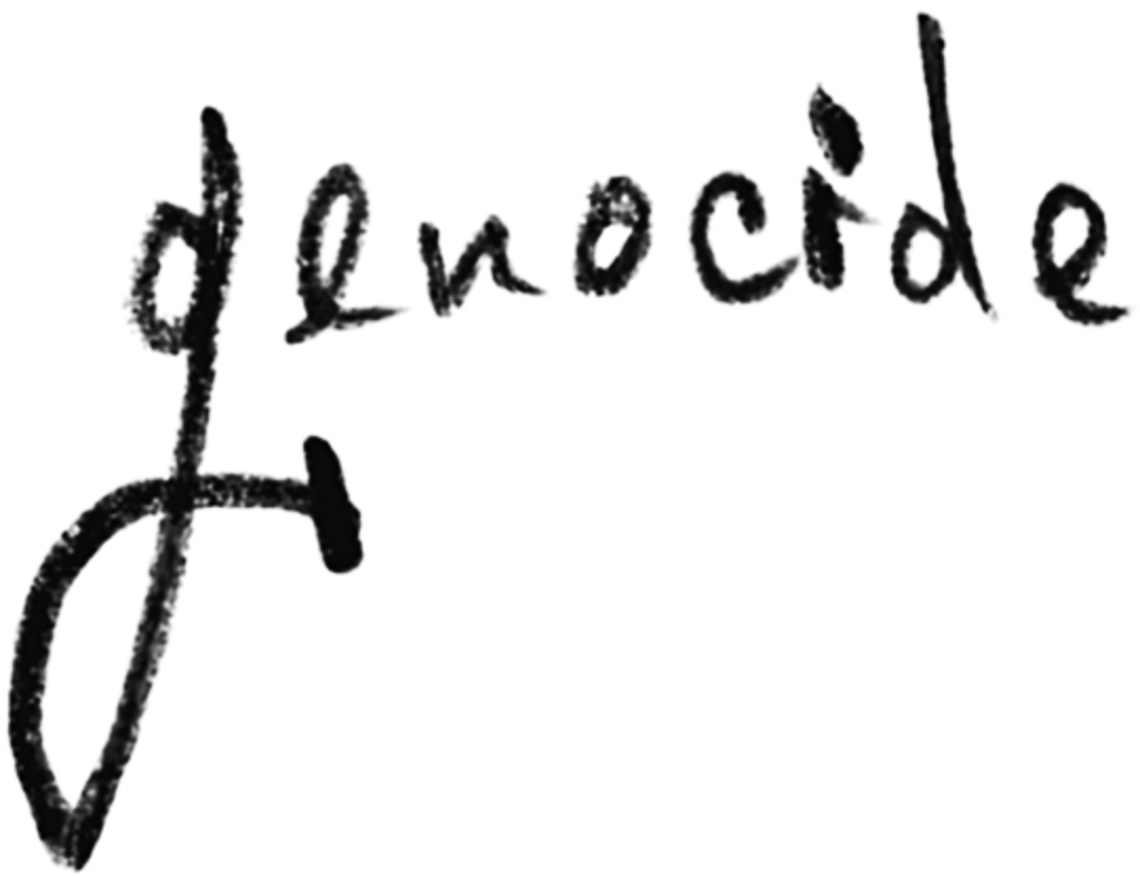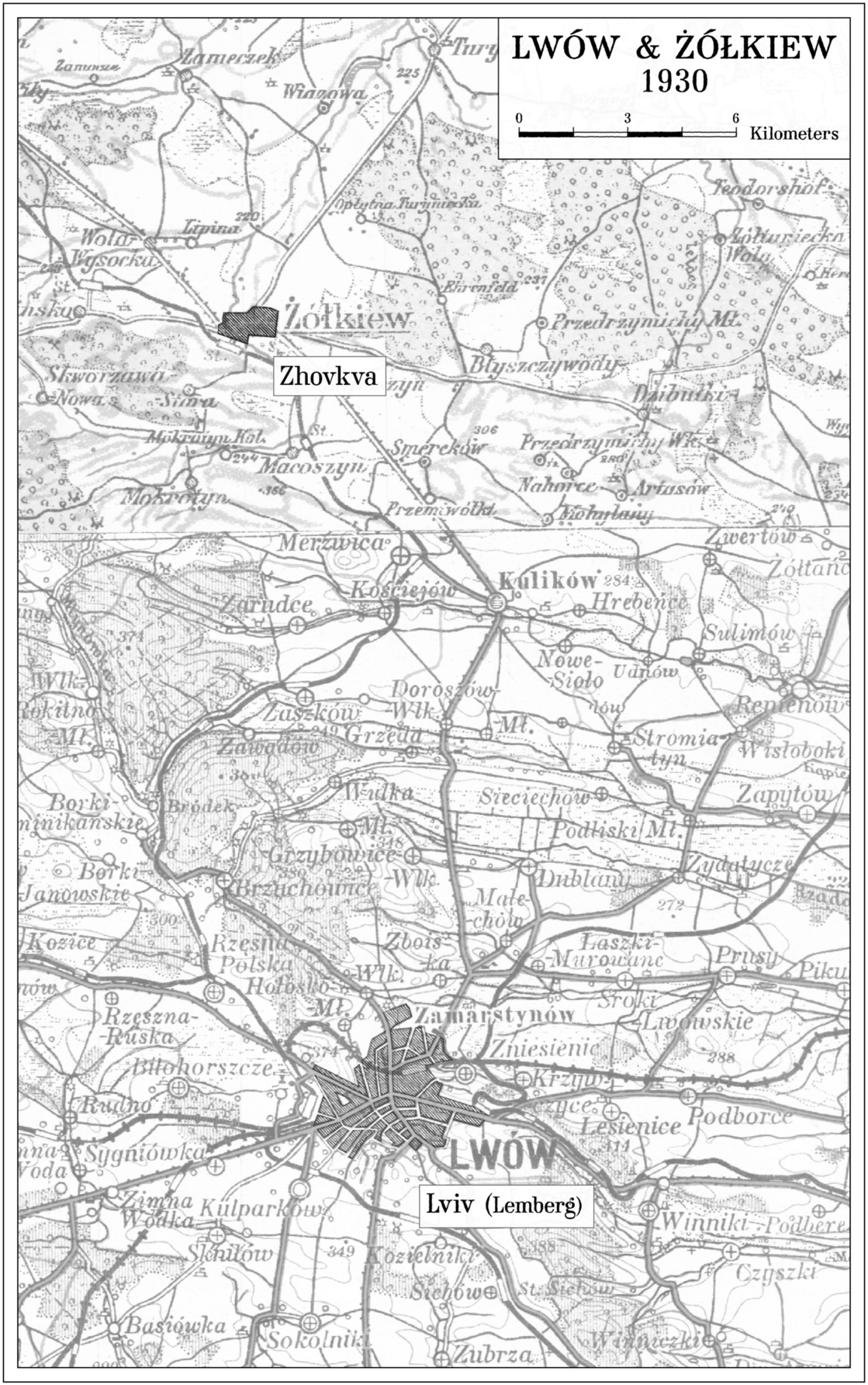Sands - East West Street: on the origins of genocide and crimes against humanity
Here you can read online Sands - East West Street: on the origins of genocide and crimes against humanity full text of the book (entire story) in english for free. Download pdf and epub, get meaning, cover and reviews about this ebook. City: New York, year: 2016, publisher: Alfred A. Knopf;Knopf Doubleday Publishing Group, genre: Non-fiction. Description of the work, (preface) as well as reviews are available. Best literature library LitArk.com created for fans of good reading and offers a wide selection of genres:
Romance novel
Science fiction
Adventure
Detective
Science
History
Home and family
Prose
Art
Politics
Computer
Non-fiction
Religion
Business
Children
Humor
Choose a favorite category and find really read worthwhile books. Enjoy immersion in the world of imagination, feel the emotions of the characters or learn something new for yourself, make an fascinating discovery.

- Book:East West Street: on the origins of genocide and crimes against humanity
- Author:
- Publisher:Alfred A. Knopf;Knopf Doubleday Publishing Group
- Genre:
- Year:2016
- City:New York
- Rating:4 / 5
- Favourites:Add to favourites
- Your mark:
East West Street: on the origins of genocide and crimes against humanity: summary, description and annotation
We offer to read an annotation, description, summary or preface (depends on what the author of the book "East West Street: on the origins of genocide and crimes against humanity" wrote himself). If you haven't found the necessary information about the book — write in the comments, we will try to find it.
East West Streetlooks at the personal and intellectual evolution of the two men who simultaneously originated the ideas of genocide and crimes against humanity, both of whom, not knowing the other, studied at the same university with the same professors, in a city little known today that was a major cultural center of Europe, the little Paris of Ukraine, a city variously called Lemberg, Lww, Lvov, or Lviv. It begins in 2010 and moves backward and forward in time, from the present day to twentieth-century Poland, France, Germany, England, and America, ending in the courtroom of the Palace of Justice at the International Military Tribunal in Nuremberg in 1945. The book opens with the author being invited to give a lecture on genocide and crimes against humanity at Lviv University, welcomed as the first international law academic to give a lecture there on such subjects in fifty years. Sands accepted the invitation with the intent of learning about the extraordinary city with its rich cultural and intellectual life, home to his maternal grandfather, a Galician Jew who had been born there a century before and whod moved to Vienna at the outbreak of the First World War, married, had a child (the authors mother), and who then had moved to Paris after the German annexation of Austria in 1938. It was a life that had been shrouded in secrecy, with many questions not to be asked and fewer answers offered if they were. As the author uncovered, clue by clue, the deliberately obscured story of his grandfathers mysterious life and of his flight first to Vienna and then to Paris, and of his mothers journey as a child surviving Nazi occupation, Sands searched further into the history of the city of Lemberg and realized that his own field of humanitarian law had been forged by two menRafael Lemkin and Hersch Lauterpachteach of whom had studied law at Lviv University in the city of his grandfathers birth, each of whom had come to be considered the finest international legal mind of the twentieth century, each considered to be the father of the modern human rights movement, and each, at parallel times, forging diametrically opposite, revolutionary concepts of humanitarian law that had changed the world. In this extraordinary and resonant book, Sands looks at who these two very private men were, and at how and why, coming from similar Jewish backgrounds and the same city, studying at the same university, each developed the theory he did, showing how each man dedicated this period of his life to having his legal conceptgenocide and crimes against humanityas a centerpiece for the prosecution of Nazi war criminals. And the author writes of a third man, Hans Frank, Hitlers personal lawyer, a Nazi from the earliest days who had destroyed so many lives, friend of Richard Strauss, collector of paintings by Leonardo da Vinci. Frank oversaw the ghetto in Lemberg in Poland in August 1942, in which the entire large Jewish population of the area had been confined on penalty of death. Frank, who was instrumental in the construction of concentration camps nearby and, weeks after becoming governor general of Nazi-occupied Poland, ordered the transfer of 133,000 men, women, and children to the death camps. Sands brilliantly writes of how all three men came together, in October 1945 in NurembergRafael Lemkin; Hersch Lauterpacht; and in the dock at the Palace of Justice, with the twenty other defendants of the Nazi high command, prisoner number 7, Hans Frank, who had overseen the extermination of more than a million Jews of Galicia and Lemberg, among them, the families of the authors grandfather as well as those of Lemkin and Lauterpacht. A book that changes the way we look at the world, at our understanding of history and how civilization has tried to cope with mass murder. Powerful; moving; tender; a revelation.
Sands: author's other books
Who wrote East West Street: on the origins of genocide and crimes against humanity? Find out the surname, the name of the author of the book and a list of all author's works by series.



